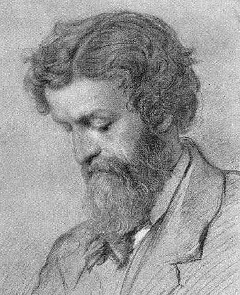| Charles Thomas Newton  Born: 16-Sep-1816 Born: 16-Sep-1816
Birthplace: Bredwardine, Herefordshire, England
Died: 28-Nov-1894
Location of death: Margate, Kent, England
Cause of death: unspecified
Gender: Male
Race or Ethnicity: White
Sexual orientation: Straight
Occupation: Archaeologist Nationality: England
Executive summary: Discovered Halicarnassus mausoleum British archaeologist, born on the 16th of September 1816, at Bredwardine in Herefordshire, and educated at Shrewsbury School and Christ Church, Oxford. He entered the British Museum in 1840 as an assistant in the Antiquities Department. Antiquities, classical, Oriental and medieval, as well as ethnographical objects, were at the time included in one department, which had no classical archaeologist among its officers. In 1852 Newton left the Museum to become vice-consul at Mitylene, with the object of exploring the coasts and islands of Asia Minor. Aided by funds supplied by Lord Stratford de Redcliffe, then British ambassador at Constantinople, he made in 1852 and 1855 important discoveries of inscriptions at the island of Calymnos, off the coast of Caria; and in 1856-57 achieved the great archaeological exploit of his life by the discovery of the remains of the mausoleum of Halicarnassus, one of the "seven wonders" of the ancient world. He was greatly assisted by Murdoch Smith, afterwards celebrated in connection with Persian telegraphs. The results were described by Newton in his History of Discoveries at Halicarnassus (1862-63), written in conjunction with R. P. Pullan, and in his Travels and Discoveries in the Levant (1865). These works included particulars of other important discoveries, especially at Branchidae, where he disinterred the statues which had anciently lined the Sacred Way, and at Cnidos, where R. P. Pullan, acting under his direction, found the colossal lion now in the British Museum.
In 1855 Newton declined the regius professorship of Greek at Oxford. In 1860 he was made British consul at Rome, but had scarcely entered upon the post when an opportunity presented itself of reorganizing the amorphous department of antiquities at the British Museum, which was divided into three and ultimately four branches. The Greek and Roman section naturally fell to Newton, who returned as Keeper, and held the office until 1885, declining the offer of the principal librarianship made to him in 1878. The Mausoleum Room, to accommodate the treasures he had found in Asia Minor, was built under his supervision, but the most brilliant episode of his administration was the acquisition of the Blacas and Castellani gems and sculptures. The Farnese and Pourtalès collections were also acquired by him. He took a leading part in the foundation of the Society for the Promotion of Hellenic Studies, the British School at Athens, and the Egypt Exploration Fund. He was Yates professor of classical archaeology at University College, London, from 1880 to 1888. His collected Essays on Art and Archaeology were published in 1886. When, on his retirement from the Museum, his bust by Boehm, now placed in one of the sculpture galleries, was presented to him as a testimonial, he desired the unexpended balance to be given to the school at Athens. After his retirement he was much occupied with the publication of the Greek inscriptions in the British Museum, but his health failed greatly in the latter years of his life. He died at Margate on the 28th of November 1894. He married in 1861 the daughter of his successor in the consulate at Rome, the painter Severn, herself a distinguished artist. She died in 1866.
Wife: (painter, m. 1861, d. 1866)
High School: Shrewsbury School
University: Christ Church, Oxford University
Professor: Yates Professor of Archaeology, University College London (1880-88)
Do you know something we don't?
Submit a correction or make a comment about this profile
Copyright ©2019 Soylent Communications
|